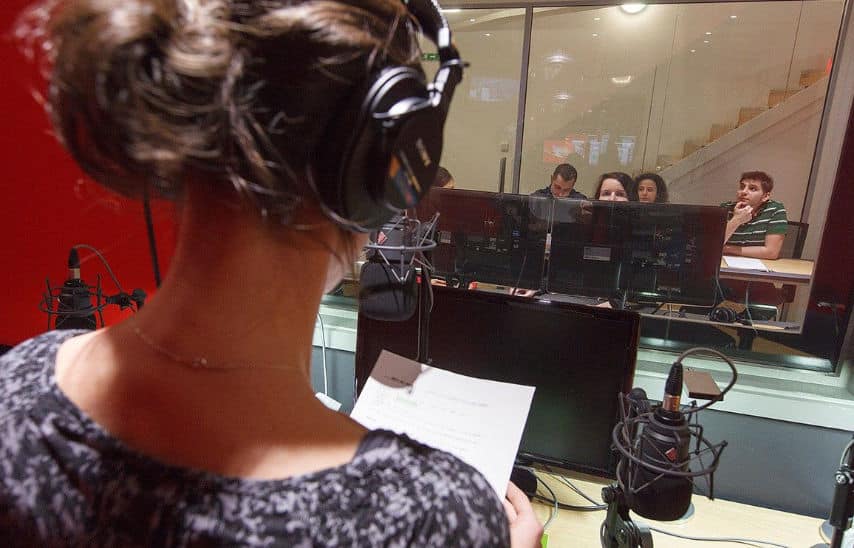At GoLocalise, we recognize the significance of linguistic diversity and the power it holds in fostering effective communication. Today, we delve into the intricacies of three prominent languages: Pashto, Dari, and Farsi. Our aim is to shed light on the historical, cultural, and linguistic aspects of these languages, providing you with a comprehensive understanding that surpasses other sources on the web.
Table of Contents
ToggleHistorical Significance
Pashto: A Language of Ancient Origins
Pashto, also known as Pakhto, boasts a rich history dating back several centuries. With origins traced to the Indo-Iranian language family, Pashto holds great importance as an official language in Afghanistan. Additionally, significant Pashto-speaking communities can be found in Pakistan, Iran, and parts of India. The historical prominence of Pashto has led to its recognition as one of the oldest languages in the region.
Dari: A Language Rooted in Persian
Dari, often referred to as Afghan Persian, represents a major dialect of the Persian language. Historically, Dari has played a vital role in the cultural and literary development of the region. It serves as one of the official languages of Afghanistan and is predominantly spoken by the Tajik ethnic group. Dari’s linguistic ties to Persian highlight its cultural significance, with strong influences from classical Persian literature and poetry.
Farsi: The Persian Language
Farsi, also known as Persian, has an illustrious heritage and is renowned for its poetic and literary contributions. It holds official status in Iran, where it serves as the lingua franca. Farsi encompasses a wide range of dialects spoken not only in Iran but also in Afghanistan, Tajikistan, and parts of Central Asia. The significance of Farsi is magnified by its deep cultural roots, as it has acted as a vehicle for Persian literature, art, and civilization throughout history.
Linguistic Characteristics
Pashto: An Inflectional Language
Pashto is a fascinating language that boasts an intricate grammatical structure. It follows an inflectional pattern, utilizing suffixes and prefixes to indicate case, tense, and mood. The script used to write the Pashto alphabet is a modified form of the Arabic one, which adds to its unique appeal. The language’s phonetics and phonology add depth to its spoken form, showcasing its distinct features in both vowels and consonants.
Dari: A Blend of Persian and Local Influences
Dari, being a dialect of Persian, shares many linguistic traits with its parent language. However, it also exhibits distinct influences from local Afghan languages. Dari uses a modified Arabic script for writing, similar to Pashto. It employs a rich vocabulary, embracing elements of Arabic, Turkic, and Pashto origin. Dari’s pronunciation and intonation lend it a melodic quality, contributing to its eloquence and beauty.
Farsi: A Language of Elegance
Farsi is renowned for its poetic and lyrical nature. Its grammatical structure, similar to Dari, emphasizes the use of gender, number, and case. Farsi boasts an extensive vocabulary, incorporating words from diverse sources such as Arabic, Turkish, and French. The Nasta’liq script is commonly used to write Farsi, accentuating the aesthetic appeal of the language when rendered in calligraphy.
Cultural Significance
Pashto: A Reflection of Pashtun Identity
The Pashto language plays a pivotal role in preserving and promoting Pashtun culture and heritage. It serves as a medium for expressing the Pashtunwali code, a set of traditional rules and principles that guide Pashtun society. Pashto literature, including poetry and folktales, has played a crucial role in maintaining the oral tradition of the Pashtun people. Furthermore, Pashto music, with its melodious tunes and soul-stirring lyrics, holds a special place in Pashtun culture.
Dari: A Gateway to Afghan Culture
Dari serves as a bridge between various ethnic groups within Afghanistan, fostering unity and understanding. It acts as a medium for preserving and promoting Afghan literature, art, and history. Dari-speaking communities have contributed significantly to Afghan poetry, prose, and music. It is through the richness of the Dari language that the diverse cultural mosaic of Afghanistan finds its voice.
Farsi: A Pillar of Persian Culture
Farsi is deeply intertwined with the cultural fabric of the Persian-speaking world. Its lyrical quality has made it the language of choice for classical Persian poetry, including the works of renowned poets such as Rumi, Hafez, and Saadi. Farsi serves as a vessel for expressing the profound philosophies, mystical concepts, and romantic sentiments that have shaped Persian culture throughout the ages. Persian calligraphy, painting, and architecture also find their roots in the eloquence and grace of the Farsi language.
Importance in Contemporary Context
Pashto: An Essential Language in South Asia
Pashto’s relevance extends beyond cultural preservation; it plays a vital role in various fields, including politics, governance, and academia. Proficiency in Pashto is essential for effective communication and engagement in the region. With Pashto being widely spoken in Afghanistan and neighboring regions, understanding the language fosters cross-cultural understanding and opens doors for business opportunities and diplomatic engagements.
Dari: Facilitating Communication and Education
Dari serves as a lingua franca in Afghanistan, enabling communication among diverse ethnic groups. It is the language of education, administration, and media, providing access to knowledge and information for millions of Afghans. Proficiency in Dari is crucial for individuals seeking to engage in social, economic, and educational endeavors within the country. Moreover, Dari’s influence in regional literature and academic discourse further highlights its significance.
Farsi: A Language of Global Reach
Farsi’s global impact is undeniable, given Iran’s geopolitical and cultural influence. Proficiency in Farsi presents numerous advantages, including access to a vast Persian-speaking market, cultural exchanges, and opportunities for diplomacy and international relations. Farsi is also a gateway to Persian literature, renowned for its depth, complexity, and universality.
Final Thoughts
The languages of Pashto, Dari, and Farsi hold immense historical, cultural, and linguistic significance. From their ancient origins to their relevance in contemporary contexts, these languages shape identities, facilitate communication, and provide gateways to vibrant cultures. By understanding the unique features and cultural nuances of Pashto, Dari, and Farsi, we can foster greater appreciation for linguistic diversity and promote meaningful connections across borders.
Remember, if you seek further information or language-related services, our team of experts is always here to assist you. Embrace the richness of Pashto, Dari, and Farsi, and embark on a journey of cultural exploration and understanding. If you want further information about this topic, read the article Pashto Voiceover: Complete Guide to Best Practices. And, if you have a project in Pashto, Dari, Farsi or any other language, so not hesitate to visit our website or get in touch with us today to learn more.
FAQs
Are Pashto, Dari, and Farsi mutually intelligible?
While there may be some lexical similarities, mutual intelligibility between these languages is limited. Speakers of Pashto, Dari, and Farsi may struggle to understand each other without prior exposure or learning.
Which regions primarily speak Pashto, Dari, and Farsi?
Pashto is primarily spoken in Afghanistan and parts of Pakistan. Dari is primarily spoken in Afghanistan, particularly in urban areas. Farsi, also known as Persian, is the official language of Iran and is widely spoken in the country.
What are the main differences in the writing systems of Pashto, Dari, and Farsi?
Pashto is written using a modified Arabic script with additional letters to accommodate specific sounds. Dari and Farsi, on the other hand, use the Persian script, which is a modified version of the Arabic script. Both Dari and Farsi have similar writing systems, with slight variations in the representation of certain sounds.
How do the pronunciation and phonetics of these languages differ?
Pashto has a complex phonetic system with unique consonants and vowels. Dari and Farsi share similar phonetic patterns, but there are some differences in the pronunciation of certain sounds. For example, the “z” sound in Pashto is pronounced as “j” in Dari and Farsi.
What is the cultural significance of Pashto, Dari, and Farsi?
Pashto, Dari, and Farsi are not just languages but also carriers of cultural heritage. They have played vital roles in the development of literature, poetry, music, and art in their respective regions. These languages serve as a medium for preserving and promoting cultural identity and traditions.
Are there any efforts to preserve and promote Pashto, Dari, and Farsi?
Yes, there are ongoing efforts to preserve and promote these languages. Educational institutions, cultural organizations, and governments in the respective regions have taken initiatives to support language education, create literature, and encourage the use of Pashto, Dari, and Farsi in various domains.






















